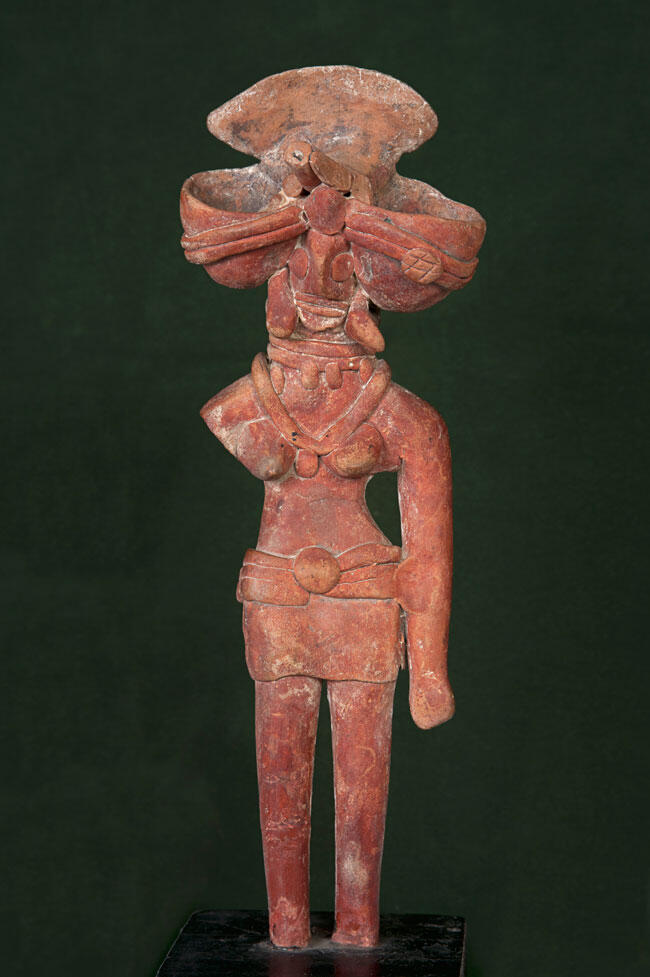In this 2004 article from the quarterly publication Sindh Watch, Paolo Biagi synthesizes the evidence of female clay figurines from Bronze Age sites in the Indus Valley to highlight the social and cultural roles of women in that society. He draws on earlier evidence from the neolithic site of Mehrgarh, in Balochistan, as well as that from mature Harappan sites like Mohenjodaro and Harappa. Based on this analysis he offers the following insights into the role of women as depicted in the figurines:
"Although little is known of the true role women played in the Indus Valley Civilization...there is little doubt that many of them represent fertility images, as suggested by characteristics depicted in the statuettes. The hairstyles, ornaments and dressing clearly indicate the important prominence assigned to women at that time in what appeared to be a nearly egalitarian society. Additionally, the bronze 'Dancing Girls' statuettes suggest specific, public activities played by women at that time. Of extreme interest is also the occurrence of specific naturalistic goddesses and their priestesses, which suggest that the Indus people worshipped a goddess whose domain was the forest."
Photo credits: "Standing Mother," National Museum of India, Delhi

